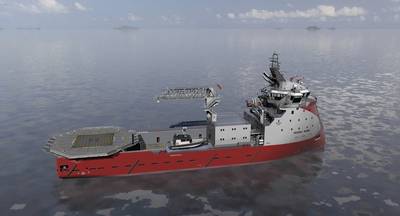High costs in converting existing vessels can efficiently put an end to updating a fleet. But with standardized, predefined modules, a vessel can be mobilized for other types of work within a few days without intervening in the ship structure. And when the mission is completed, the module can easily be demounted.
“To a shipowner considering a tender, the vigorous costs of having to convert their existing tonnage can set a stop to their project. This can be solved by our modular modification,” said Runar Muren at Ulstein. Design & Solutions AS.
Mobilization can be carried out in a few days by installing the premanufactured modules on the ship, and the ship can quickly go to service. Within a short period of time, a platform supply vessel can reappear as an offshore wind service / accommodation vessel (alternative energy), subsea construction (IMR) vessel or a vessel for ROV services. The modules can be adapted to the customer's specific wishes and requirements.
The short and effective conversion reduces the time spent at the shipyard, and the downtime for the vessel, Ulstein said. Foundations for installations such as a gangway or a crane are implemented in the module. Modules can also contain ROV facilities below the mezzanine deck. At mobilization, no extensive structural changes need to be done, and the modules and the mezzanine deck can easily be demounted when the mission is completed. This way, the vessel can easily be converted to another mission, or revert it to a platform vessel if that need should arise. To ship owners with several ships of the same design in their fleet, the modules can be re-used on other of their vessels with only minor adjustments required.
“We have developed a very cost-efficient solution to the ship owners,” Muren said. “The traditional conversions are project based and include a complete package of basic design and engineering. By basing such conversions on using modules, less hours will be spent with shorter time from start to finish. In addition, the structure and integration work have been prepared prior to the mobilization starts. ULSTEIN’s strength is that we have the resources to follow-up the total life cycle of a ship. As ship designers, we can be project managers in the complete or parts of the construction process, from design start-up to the delivery of a converted vessel, depending on our client's wishes and needs. Our shipyard, Ulstein Verft, can take on assignments such as conversions, and this yard has already been the constructor of several of these existing ships. By having all necessary resources in our company, we can deliver such conversions very cost-efficiently.”
The company noted that conversions can also be done at other shipyards, in Norway and in other countries.
ULSTEIN has initially developed the predefined modules for its PX121 and PX105 ship designs, but can also develop conversion modules for other types of ships, including its own as well as external ship designs.
With a more permanent conversion, a vessel can also be converted into a completely different type of ship than the traditional offshore segments, such as expedition cruise ships, yachts or fish carriers.













